[ here to download the full 2021 Feeder School tablesOpens in new window ]
The Irish Times 2021 Feeder School list, published today, provides new insights into the education pathways taken by thousands of students who have completed the Leaving Cert cycle. The following are five of the key take-aways from this year's data:
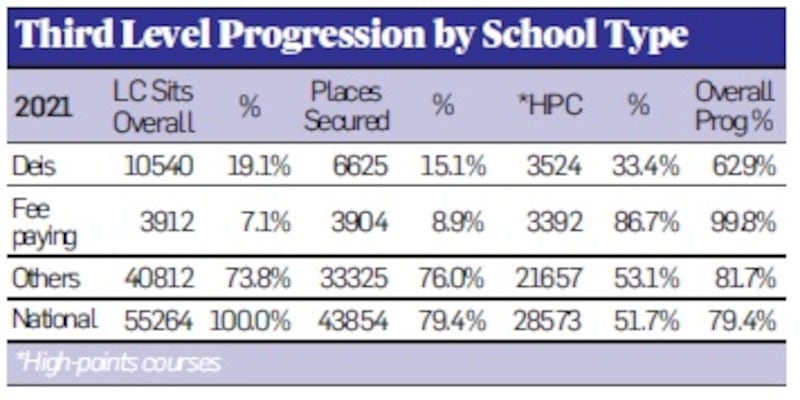
1. Class a determinant
At a macro level more students from Deis schools (3,524) secured places on high points courses in 2021 than from fee-paying schools (3,392).
The undoubted success of investment in Deis schools these figures reveal is tempered by the fact that the numbers are a proportion of Deis 10,540 school leavers, whereas the fee-paying numbers are drawn from a much smaller cohort of just 3,912 school leavers.
At a micro level it would appear that fee-paying schools still dominate our most sought-after courses. Ten of the top 15 boys' schools in terms of progression to third level are fee-paying colleges. The five non-fee-paying schools in this category, Ard Scoil Rís, Limerick; Oatlands College, Mount Merrion; St Benildus Stillorgan, Capuchin Rochestown Cork and Christian Brothers, Mitchelstown, mostly draw their pupils from families with similar social class backgrounds to their neighbouring fee-paying schools.
Interestingly, only seven of the top 15 girls-only second-level schools are fee-paying, with three of the four most successful colleges being non-fee paying. 1st Salerno in Galway, 2nd Loreto Dalkey (fee-paying), 3rd Coláiste Muire Ennis, 4th Coláiste Íde, An Daingean.
Again social-class background rather than attending a fee-paying college seems to be the determinant factor governing levels of progression.
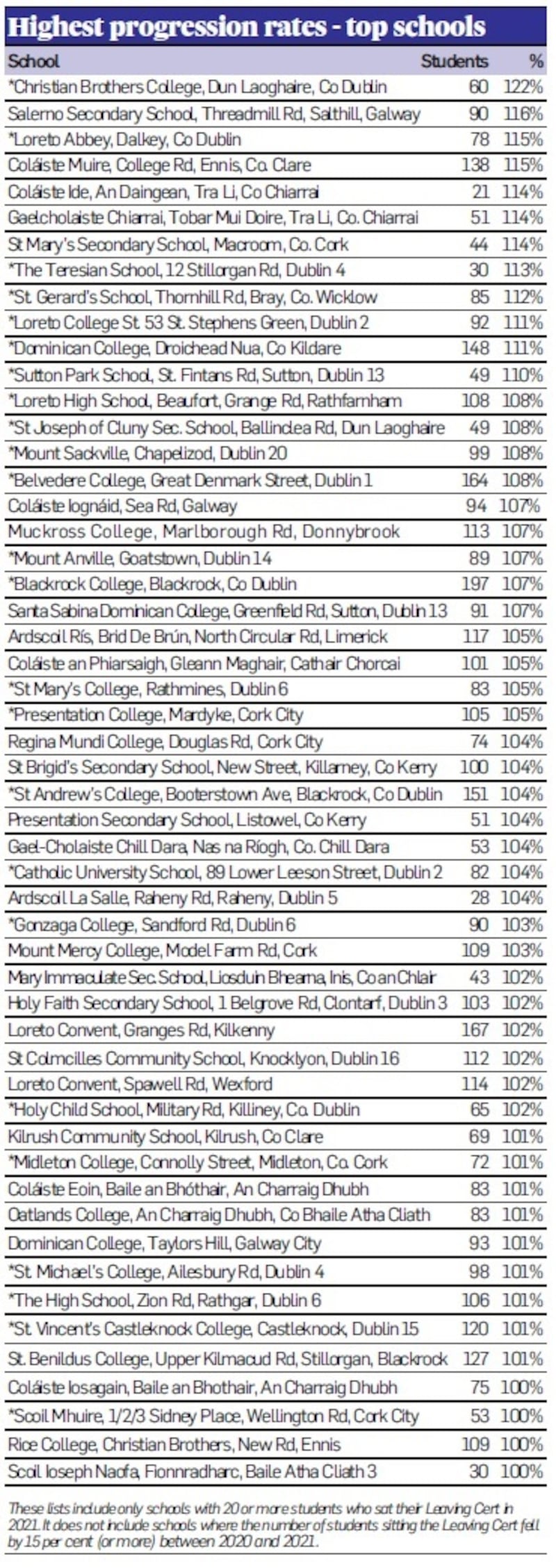
2. Most students are choosing to apply to their local or regional colleges
Irish young people, unlike their compatriots in the UK, tend to apply for third level places at their local colleges. Research carried out with those who have progressed to third level indicate that most Irish school leavers apply to attend colleges where they can continue to socialise with their peer group.
There is also a growing economic factor causing students to select their local institutions, driven in large part by the soaring cost of accommodations in our towns and cities: living away from home adds hugely to the cost of attending college.
There are significantly lower third level progression rates among students in counties or geographic locations, which do not have access to third level institutions and who are therefore unable to attend a chosen course without living away from home. Contrast Kilkenny 68 per cent, Longford (68) and Laois (70) with Galway (81), Donegal (84), and Clare 86 percentage progression rates to third level.
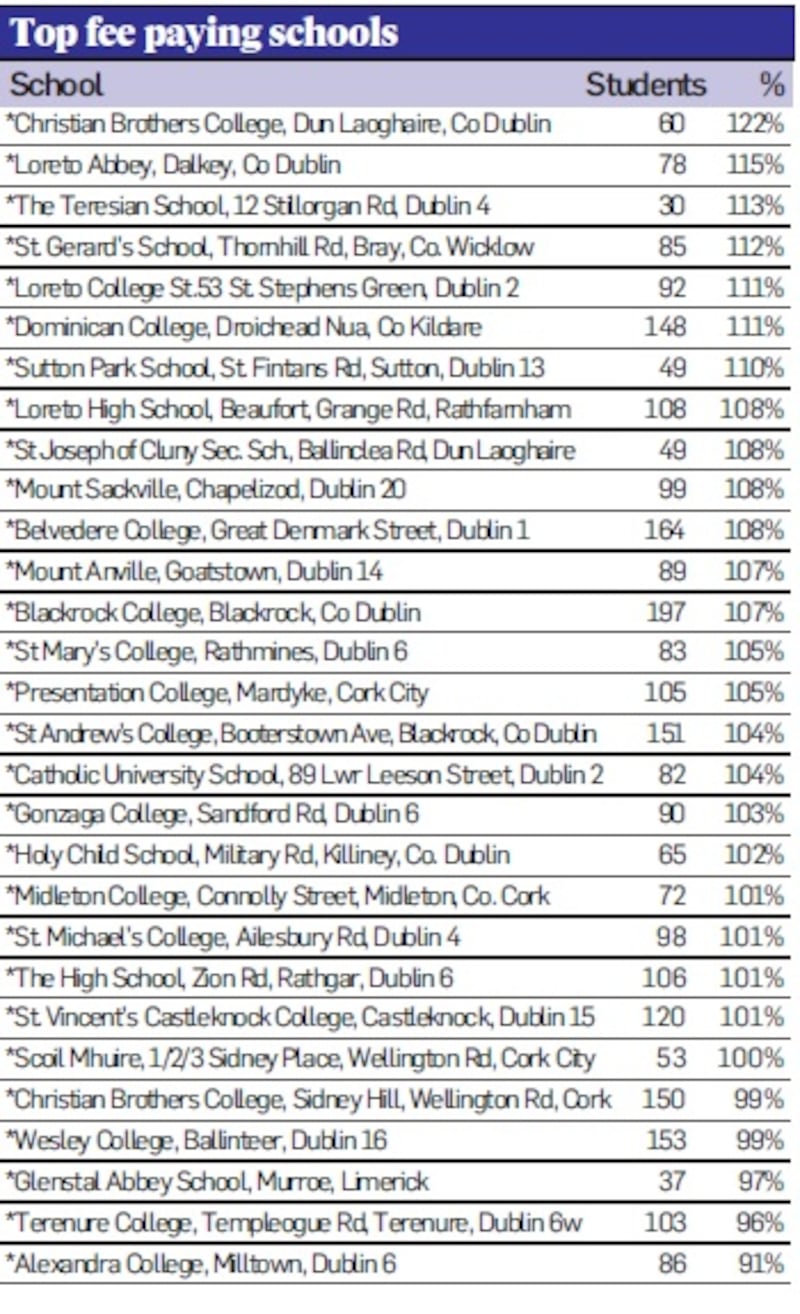
3. Progression by post code
Apart from the school a child attends, where families live also seems to determine overall third level progression rates. The most affluent parts of the capital city, such as Dublin 6 and Dublin 14, saw 104 and 96 per cent respectively of the total numbers of 2021 6th years who sat the Leaving Cert in schools within these postal districts progress to third level this year.
In other postal districts of the city Dublin 11 and 7, the proportion of Leaving Cert students progressing to college in 2021 were 54 and 64 per cent respectively. The divide is also stark when the figures are broken down into those who secured places on higher points courses. Some 96 per cent of school leavers in Dublin 6 went on to one of these programmes, compared with 46 per cent in Dublin 11.
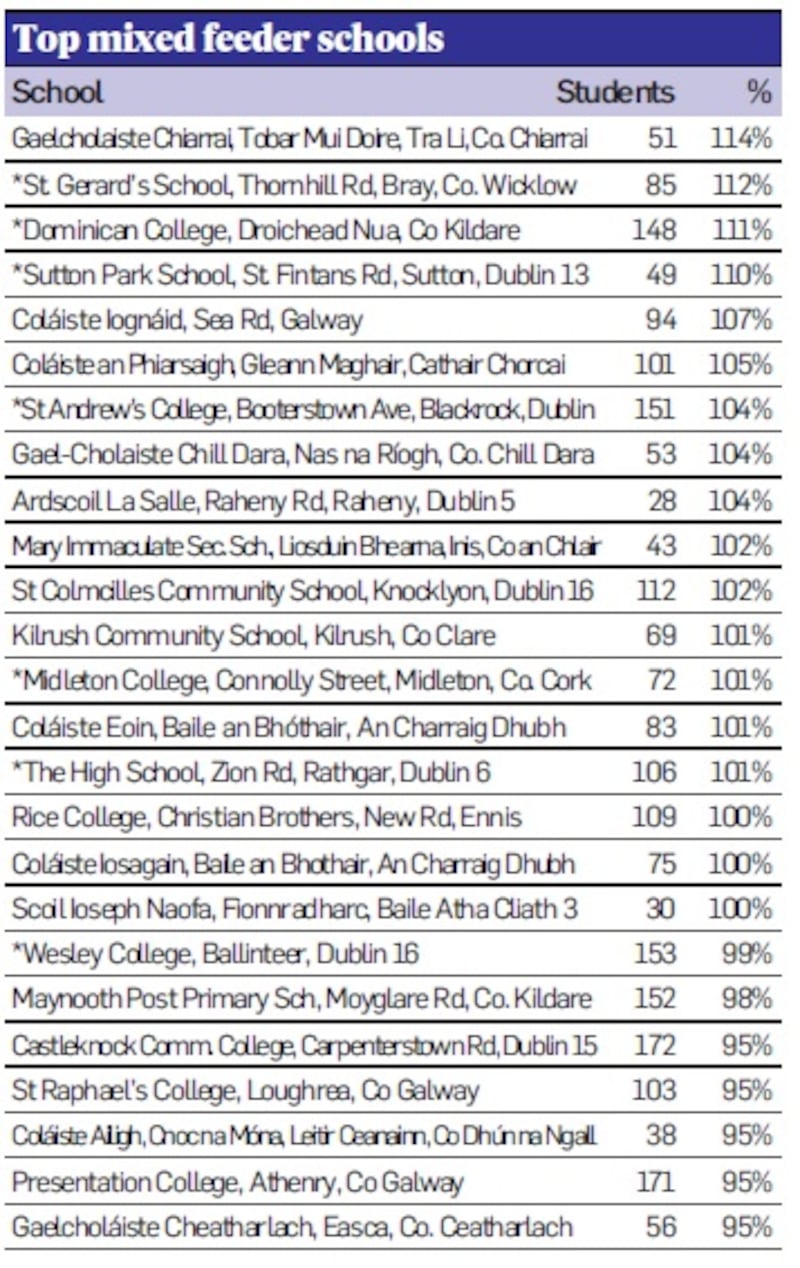
4.We still want to pursue the CAO route
The current year's numbers reveal Ireland's exceptionally high third level participation rate, which is among the highest in the world.
Ireland also continues to have one of the highest retent- ion rates in second level across Europe: that is the proportion of students who stay in school until the Leaving Cert.
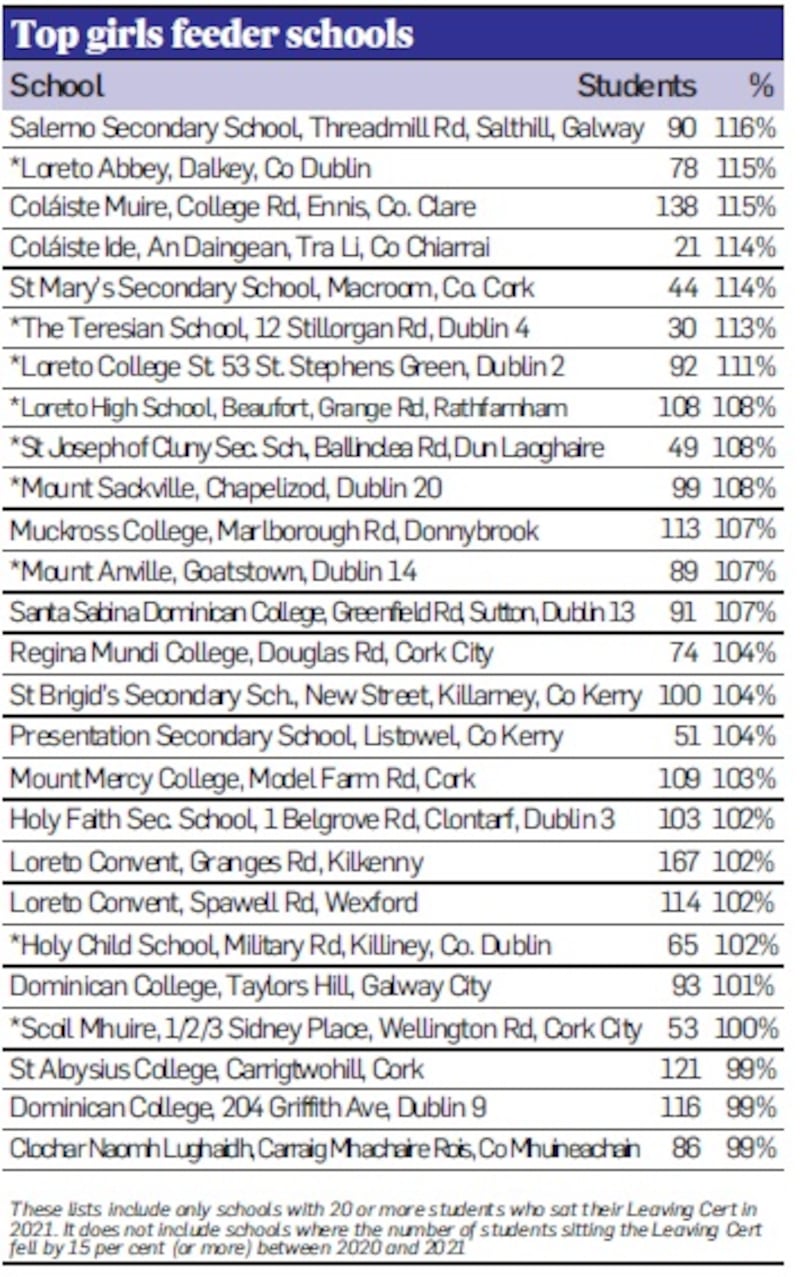
5. The growth of full-time senior cycle grinds schools
While pupil numbers sitting the Leaving Cert continue to increase annually due to demographic factors, our figures show that numbers sitting the Leaving Cert in 143 second-level schools (composed of nine fee-paying, 44 Deis and 90 non-fee paying institutions) dropped by more than 15 per cent this year, compared to their 2020 numbers.
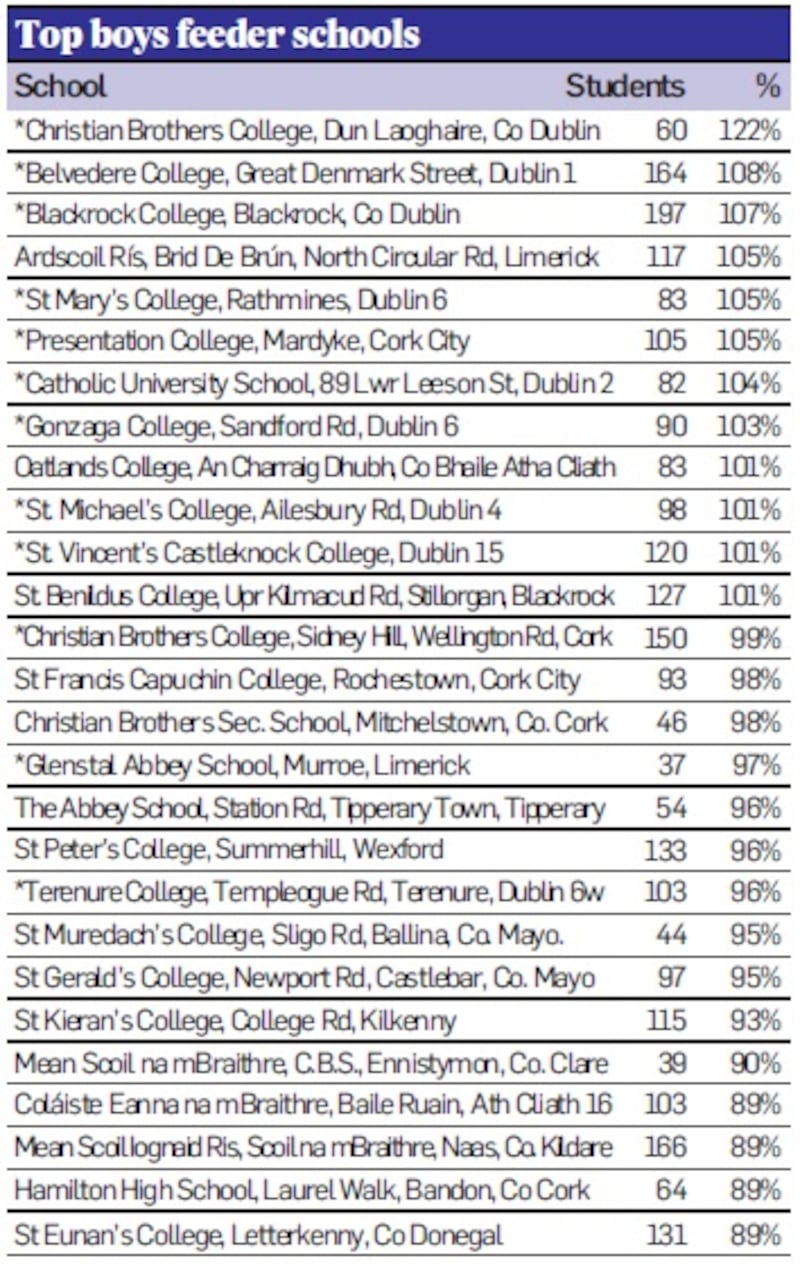
So what may be driving these numbers? Firstly, the country was still in recession when this year’s cohort of Leaving Cert students started second level in 2015. Specifically, in relation to the lower numbers sitting the Leaving Cert in fee-paying schools in 2021, the downturn hit family incomes in 2015, adversely affecting enrolment numbers in these schools at that time.
Secondly, and probably more importantly, the presence of full-time grind schools in our major cities offering a two-year Leaving Cert programme seems to be drawing some families who can afford the fees for the final two/three years of second level education.
Some parents believe that the grind schools offer a more flexible range of subject choices than those available in their child’s second-level schools. Furthermore, many students want to escape what they perceive to be restrictive rules and regulations central to our second-level school cultures.












